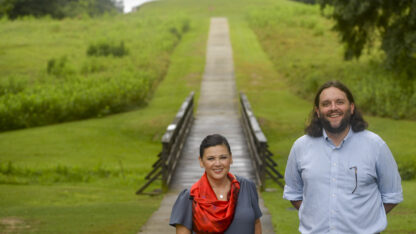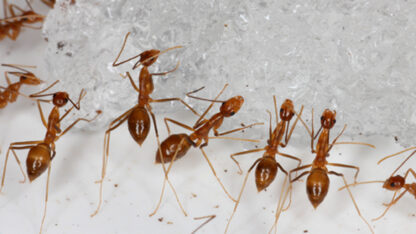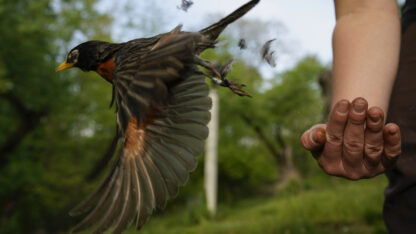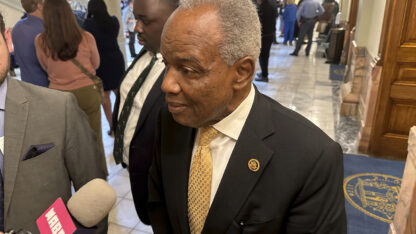Watching thousands of baby puffins being tossed off a cliff is perfectly normal for the people of Iceland’s Westman Islands.
This yearly tradition is what’s known as “puffling season” and the practice is a crucial, life-saving endeavor.
The chicks of Atlantic puffins, or pufflings, hatch in burrows on high sea cliffs. When they’re ready to fledge, they fly from their colony and spend several years at sea until they return to land to breed, according to Audubon Project Puffin.
Pufflings have historically found the ocean by following the light of the moon, digital creator Kyana Sue Powers told NPR over a video call from Iceland. Now, city lights lead the birds astray.
Powers found out about puffling season while visiting Vestmannaeyjar, or the Westman Islands, off the south coast of Iceland last summer. She was leaving a restaurant after dinner and noticed some strange behavior from children and adults carrying flashlights and boxes.
“People were just running around the streets, like into corners and sidewalks and stuff, frantically chasing things,” she said.
Eventually, someone offered an explanation: They were on puffling patrol.
Many residents of Vestmannaeyjar spend a few weeks in August and September collecting wayward pufflings that have crashed into town after mistaking human lights for the moon. Releasing the fledglings at the cliffs the following day sets them on the correct path.
This human tradition has become vital to the survival of puffins, Rodrigo A. Martínez Catalán of Náttúrustofa Suðurlands [South Iceland Nature Research Center] told NPR. A pair of puffins – which mate for life – only incubate one egg per season and don’t lay eggs every year.
“If you have one failed generation after another after another after another,” Catalán said, “the population is through, pretty much.”
How to prepare for puffling season
The hardest step for most people eager to participate in puffling season will be traveling to a place where the seabird breeds.
The Westman Islands currently have the largest puffin colony, so its puffling season is popular. But the younglings need help wherever the birds breed in the North Atlantic.
The exact timing changes every year, based on factors like food supply. When ocean temperatures negatively impact the population of herring, a main food supply for puffins, the chicks take longer to grow. That means they must leave the nest later in the season. This year, most fledglings were found in mid-September.
You can search for pufflings starting around 9 p.m. until as late as 3 a.m., and can hunt by foot, bike, car or even boat. Powers advises looking for them where there are the most lights, like harbors, golf courses, hospitals, schools, gas stations or construction sites. Some birds even end up in harbors, where boat oil in the water can weigh them down and cause them to drown, Powers said.
A flashlight can help find pufflings, which may be confused and trying to hide from potential predators. It’s common to collect four to 10 in a night, Powers said.
Catalán recommends using gloves to pick them up, which protect the handler from avian flu, and the animal from the oil or chemicals on human skin. Then, they should be placed one bird to a box with some grass inside to help prevent feces from getting on them.
Puffling patrollers collect data each year for scientific purposes. People are encouraged to log the weight of each catch on a website.
There are a few techniques for releasing the seabirds at the “Beautiful Puffin and Shore View” cliffs the following day. The gentlest way is to place them on the ground and wait for them to fly off the cliff when they’re ready.
“I don’t see many people do this,” Powers said, explaining that instead, most people toss them off the cliffs underhand. “Some people kind of hold it like a football with the wings out and then they shoot it – but you know, it’s not aggressive, [the pufflings] are ready to go.”
Powers, who is originally from Boston, said that locals don’t seem to get too emotional while freeing the young puffins, but she does. This is her second year as part of puffling patrol.
“It’s a great feeling because you just rescued this little guy. And when you bring him to the cliff – it’s the first time in his life he’s seeing the ocean, and he’s gonna live there for the next few years,” she said. “I’m always like, ‘Bye buddy, have a great life, I can’t wait to see you again.'”
Copyright 2022 NPR. To see more, visit https://www.npr.org.
9(MDAxODM0MDY4MDEyMTY4NDA3MzI3YjkzMw004))
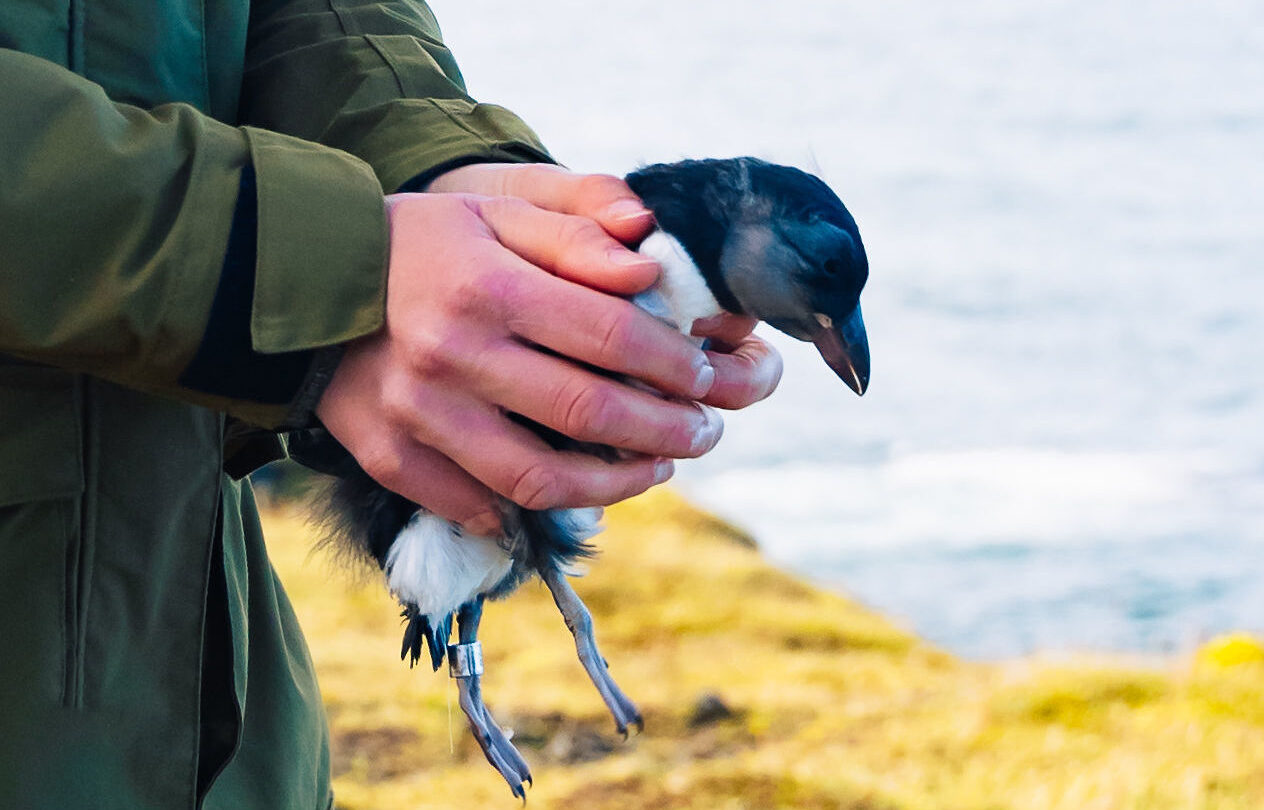
9(MDAxODM0MDY4MDEyMTY4NDA3MzI3YjkzMw004))
